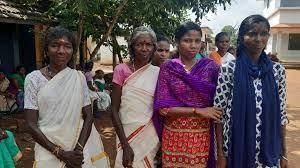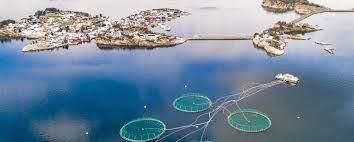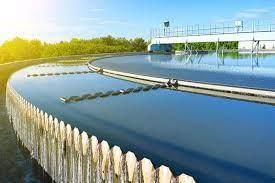UPSC Daily Current Affairs- 14th August 2023 | Current Affairs & Hindu Analysis: Daily, Weekly & Monthly PDF Download
GS-I
Evolution of the Malaiyali Tribe

Why in News?
- The Malaiyali tribe, scattered across Tamil Nadu’s hilly regions, has undergone a remarkable transformation over two centuries.
- From their initial foraging lifestyle to settling atop the Yelagiri hill and constructing traditional clay huts, the tribe has transitioned into a more modern way of life.
- Amidst the evolving landscape, one old-fashioned hut remains as a testament to their history.
Malaiyali Tribe
- Historical Settlement: Over 200 Malaiyali tribespeople established a comprehensive system on Yelagiri hill with clay huts for shelter, storage, farming, and cattle.
- Modern Evolution: Today, only one antiquated hut endures, belonging to tribesman Govinthasamy, while the rest have given way to brick-and-mortar homes.
- Malaiyali Tribe: “Malai” means hill and “yali” means people, depicting the tribespeople who settled across Tamil Nadu’s hilly regions.
Significance of Red Clay
- Integral Material: Red clay played a pivotal role in building huts, burying the dead, and sustaining the tribe’s lifecycle from birth to death.
- Unique Construction: Huts were constructed with red clay on teak wood frames, embodying the tribe’s connection to nature.
- Practicality and Value: Despite its worn appearance, the hut holds immense value due to the scarcity and high cost of materials like teak wood.
Distinctive Hut Features
- Roofing: A 12-foot thatched roof made of dry bamboo leaves, waxed with cow dung to prevent leaks during monsoons.
- Interior Space: Deceptively small from outside, the hut accommodates eight people and an attic for storing household items.
- Functional Evolution: Originally meant for living, the hut transformed into a storage space for seeds during sowing and grains post-harvest.
- Elevated Structure: The hut stands on a teak wood stilt to prevent flooding during heavy rains and deter rodents.
- Storage Space: Stilts create additional storage beneath the house for grains or poultry.
- Traditional Living: The one-room structure housed various activities, highlighting the tribe’s reliance on agriculture.
Source: The News Minute
Who was Sant Guru Ravidas?

Why in News?
Prime Minister laid the foundation stone for a ₹100 crore temple dedicated to Sant Ravidas in Madhya Pradesh’s Sagar.
About Guru Ravidas
- Ravidas was an Indian mystic poet-saint of the Bhakti movement and founder of the Ravidassia religion during the 15th to 16th century CE.
- Venerated as a guru (teacher) in the region of Uttar Pradesh, Rajasthan, Maharashtra, Madhya Pradesh and mainly Punjab and Haryana. He was a poet-saint, social reformer and spiritual figure.
- The life details of Ravidas are uncertain and contested. Scholars believe he was born in 1450 CE, in the cobbler caste.
- Ravidas’s devotional verses were included in the Sikh scriptures known as Guru Granth Sahib.
- The Panch Vani text of the Dadupanthi tradition within Hinduism also includes numerous poems of Ravidas.
- He taught the removal of social divisions of caste and gender and promoted unity in the pursuit of personal spiritual freedoms.
Significance of his teachings
- Philosophy and values of Sant Ravidas like social justice, equality and fraternity have been imbued in our constitutional values.
- He had envisaged a society that is based on equality and free from any kind of discrimination.
- He gave it the name ‘Be-gampura’ (a city near Lahore) where there is no place for any kind of grief or fear.
- Such an ideal city would be bereft of fear, vulnerability or scarcity. Rule of law based on the right ideas like equality and welfare of all would be the principle for governance.
Source: The Times of India
GS-II
Additional Guidelines For Health and Wellness Celebrities

Why in News?
Recently, the Ministry of Consumer Affairs, Food and Public Distribution, has issued Additional Influencer Guidelines For Health and Wellness Celebrities, Influencers and Virtual Influencers, making it mandatory for them to give disclaimers while presenting as Health Experts.
- These guidelines are an extension of the previously established "Guidelines for Prevention of Misleading Advertisements and Endorsements for Misleading Advertisements, 2022".
- The additional guidelines aim to deal with misleading advertisements, unsubstantiated claims and ensure transparency in health and wellness endorsements.
What are the Key Highlights of the Guidelines?
- Disclosure of Health Certificates:
- Certified medical practitioners and health & fitness experts holding certifications from recognised institutions when sharing information, promoting products or services or making any health-related claims, must disclose that they are certified health/fitness experts and medical practitioners.
- Must Provide Clear Disclaimer:
- Celebrities, influencers, and virtual influencers who position themselves as health experts or medical practitioners need to provide clear disclaimers.
- These disclaimers must emphasize that their endorsements should not be treated as substitutes for professional medical advice, diagnosis, or treatment.
- Endorsers must encourage their audience to seek advice from health and wellness centers prior to making any significant alterations to their diet, exercise or medication routines.
- Adequate Due Diligence:
- Endorsers will have to conduct adequate due diligence before endorsing any product or service. They may, preferably, use or experience product or service to the extent possible before endorsement.
- Influencers and virtual influencers must refrain from making false, misleading or exaggerated claims that could potentially mislead their consumers.
- Scope of Disclosure:
- The requirement for disclosure or disclaimer applies to endorsements, promotions, and instances where health-related claims are made.
- Topics such as health benefits from food items, nutraceuticals, disease prevention, treatment, cure, medical conditions, recovery methods, and immunity enhancement fall within the purview of these regulations.
- Exemptions for General Wellness Advice:
- General wellness and health advice, which do not pertain to specific products, services, health conditions, or outcomes, are exempt from these regulations.
- For instance, advice like "Drink Water and Stay Hydrated," "Exercise Regularly," and "Get Enough Good Sleep" are exempt.
- Distinguishing Personal Views and Professional Advice:
- Celebrities who position themselves as health experts must clearly differentiate between their personal opinions and professional advice.
- They are cautioned against making specific health claims without credible evidence. Encouraging audiences to consult healthcare professionals for accurate medical advice is strongly recommended.
- Enforcement and Penalties:
- The Department of Consumer Affairs will actively monitor and enforce these guidelines.
- Violations may lead to penalties under the Consumer Protection Act 2019 and other relevant legal provisions.
Source: PIB
Lymphatic Filariasis

Why in News?
Recently, the Union Health Minister inaugurated the second phase of the Annual Nationwide Mass Drug Administration (MDA) initiative for Lymphatic Filariasis.
- India aims to eliminate Lymphatic Filariasis by 2027, three years ahead of the global target, through a mission-driven strategy.
What is Lymphatic Filariasis?
- About:
- Lymphatic filariasis, commonly known as elephantiasis, is a neglected tropical disease caused by parasitic infection which is transmitted through the bite of infected mosquitoes.
- This impacts millions of individuals in tropical and subtropical regions across the globe.
- Causes and Transmission:
- Lymphatic filariasis is caused by infection with parasites classified as nematodes (roundworms) of the family Filariodidea.
- There are 3 types of these thread-like filarial worms:
- Wuchereria bancrofti, which is responsible for 90% of the cases,
- Brugia malayi, which causes most of the remainder of the cases,
- Brugia timori, which also causes the disease.
- Symptoms:
- Lymphatic filariasis infection involves asymptomatic, acute, and chronic conditions.
- In chronic conditions, it leads to lymphoedema (tissue swelling) or elephantiasis (skin/tissue thickening) of limbs and hydrocele (scrotal swelling).
- Lymphatic filariasis infection involves asymptomatic, acute, and chronic conditions.
- Treatment:
- The World Health Organization (WHO) recommends three drug treatments to accelerate the global elimination of lymphatic filariasis. The treatment, known as IDA, involves a combination of ivermectin, diethylcarbamazine citrate and albendazole.
- The plan is to administer these drugs for two consecutive years. The life of the adult worm is hardly four years, so it would die a natural death without causing any harm to the person.
- The World Health Organization (WHO) recommends three drug treatments to accelerate the global elimination of lymphatic filariasis. The treatment, known as IDA, involves a combination of ivermectin, diethylcarbamazine citrate and albendazole.
- Global Threat and Preventive Measures:
- Over 882 million people in 44 countries face the threat of lymphatic filariasis and require preventive chemotherapy.
- Preventive measures involve mass drug administration (MDA) to the at-risk population using safe medicine combinations.
- More than 9 billion treatments have been administered since 2000 to halt infection spread.
- Progress and Achievements:
- Successful MDA efforts have reduced transmission and infection prevalence.
- 740 million people no longer require preventive chemotherapy.
- In 2018, 51 million people were infected, marking a 74% reduction since the initiation of global elimination efforts.
- Vector Control and WHO's Approach:
- Mosquito control, such as insecticide-treated nets and indoor residual spraying, supplements preventive chemotherapy.
- WHO's Global Programme to Eliminate Lymphatic Filariasis (GPELF) launched in 2000 with a mission to eradicate the disease.
- GPELF aims to validate elimination in 80% of endemic countries by achieving sustained low infection rates and providing care.
- The program strives for post-MDA surveillance in all endemic countries and ultimately reduces the population needing MDA to zero.
- The strategy focuses on stopping infection spread and providing essential care to affected individuals.
What are India's Initiatives for Lymphatic Filariasis Eradication?
- Nationwide Mass Drug Administration campaigns administer preventive medicines in endemic areas.
- Collaboration with various stakeholders, sectors, and NGOs enhances the initiative's impact.
- “Through Jan Bhagidaari and ‘Whole of Government’ and ‘Whole of Society’ approach, India shall be able to eliminate this disease from the country”.
- Second phase of the MDA initiative targets 81 districts in 9 endemic states for targeted intervention. (Assam, Bihar, Chhattisgarh, Jharkhand, Karnataka, Maharashtra, Odisha, Telangana and Uttar Pradesh).
- State-central collaborations enhance healthcare, surveillance, prevention, and treatment.
- Encouraging medication consumption in the presence of healthcare workers promotes adherence.
Source: PIB
Bill to Alter Chief Election Commissioner Appointment Process

Why in News?
The Government has introduced a bill in the Rajya Sabha to modify the appointment process of the Chief Election Commissioner (CEC) and Election Commissioners (ECs). The proposed bill aims to exclude the Chief Justice of India (CJI) from the panel responsible for selecting the CEC and ECs. This change has triggered discussions about the composition of the selection committee and its potential impact on the process’s independence.
Background of the Chief Election Commissioner Appointment Issue
The context for the recent bill can be traced back to a series of legal developments:
- Supreme Court Ruling (March 2023):
- In March 2023, the Supreme Court ruled that the Chief Election Commissioner (CEC) and Election Commissioners (ECs) would be appointed by the President of India, following the advice of a committee comprising the Prime Minister, Leader of Opposition in the Lok Sabha, and the Chief Justice of India.
- This arrangement was to be followed until a proper law was enacted by Parliament to address the appointment process.
- Originating from a PIL:
- The legal process began with a 2015 Public Interest Litigation (PIL) challenging the constitutionality of the Centre-appointed members of the Election Commission.
- This PIL raised concerns about the independence of the election body.
- Constitutional Article and Legal Complexity:
- Article 324(2) of the Indian Constitution outlines the composition and appointment of the Election Commission.
- It stipulates that the President shall appoint the Chief Election Commissioner and other Election Commissioners, with the provision for a law to be enacted by Parliament regarding these appointments. Since no such law had been enacted, legal ambiguity persisted.
- Supreme Court Intervention:
- The case progressed over the years, and in 2018, a two-judge bench of the Supreme Court referred the matter to a larger bench due to the complexity of interpreting Article 324.
- This step was taken as the issue required a thorough examination and analysis of the constitutional article’s nuances.
- Addressing the Constitutional Vacuum:
- In the absence of a parliamentary law as mandated by Article 324, the Supreme Court took the initiative to fill the “constitutional vacuum” and provide a temporary framework for CEC and EC appointments through its March 2023 judgment.
- Introduction of the Bill:
- The bill introduced in the Rajya Sabha seeks to formalize the appointment process for the CEC and ECs through legislative means, thereby addressing the constitutional gap highlighted by the Supreme Court’s previous interventions.
- This legislative approach aims to establish a structured and statutory procedure for these appointments.
Current Process of Appointment for CEC and ECs
The appointment process for the Chief Election Commissioner (CEC) and Election Commissioners (ECs) in India currently lacks a well-defined legislative framework. The existing process can be summarized as follows:
- Constitutional Articles:
- Part XV (Elections) of the Indian Constitution encompasses five articles (Article 324 to Article 329) that pertain to the conduct of elections in the country.
- Article 324 specifically grants the Election Commission the authority of “superintendence, direction, and control of elections.”
- Composition of the Election Commission:
- Article 324 establishes the Election Commission as a body responsible for overseeing elections.
- It consists of the Chief Election Commissioner and other Election Commissioners, whose number can be determined by the President as required.
- Appointment Authority:
- Prior to the Supreme Court’s intervention in March 2023, the process of appointing the CEC and ECs was vested in the President of India.
- The President made these appointments based on the recommendations presented by the government.
Key Features of the Bill Aiming to Alter the Appointment Process of CEC and ECs
The proposed bill to amend the appointment process of the Chief Election Commissioner (CEC) and Election Commissioners (ECs) contains several significant features:
- Composition of the Selection Committee:
- The Selection Committee for appointing the CEC and ECs will comprise:
- The Prime Minister as the Chairperson
- The Leader of the Opposition in Lok Sabha (or the leader of the largest opposition party in Lok Sabha if the Leader of the Opposition position is vacant)
- A Union Cabinet Minister nominated by the Prime Minister
- Search Committee:
- The bill introduces the establishment of a Search Committee responsible for preparing a panel of five individuals to be considered for the roles of CEC and ECs.
- The Search Committee will be led by the Cabinet Secretary and include two members of the rank of Secretary, knowledgeable and experienced in electoral matters.
- Non-Invalidation due to Vacancy:
- The appointments of the CEC and other ECs will not be nullified due to any vacancies or shortcomings in the composition of the Selection Committee.
- Repealing of Previous Act:
- The bill proposes the repeal of the Election Commission (Conditions of Service of Election Commissioners and Transaction of Business) Act, 1991.
- Upon passing of the new Act, the functioning of the Election Commission will be governed by the new legislation.
- The 1991 Act currently stipulates that the salary of ECs should be equivalent to that of a Supreme Court judge.
- The bill aligns the salary, allowances, and service conditions of the CEC and other ECs with those of the Cabinet Secretary.
- Unanimity and Majority Decision:
- The proposed bill retains the provision that the affairs of the Election Commission should be conducted unanimously whenever feasible.
- In the event of a difference of opinion, the view supported by the majority will prevail.
Concerns Regarding the Proposed Changes to the Appointment Process of CEC and ECs
The proposed changes to the appointment process of the Chief Election Commissioner (CEC) and Election Commissioners (ECs) have sparked concerns on several fronts:
- Imbalance in Selection Committee:
- The inclusion of the Prime Minister and a Cabinet Minister nominated by the Prime Minister in the three-member committee raises concerns about the committee’s balance of power.
- With the Leader of the Opposition potentially holding a minority vote, the composition of the committee might not ensure equitable decision-making from the outset.
- Impact on Independence:
- The proposed changes could potentially impact the autonomy and independence of the Election Commission of India (ECI).
- A committee with a significant representation from the Executive branch might raise questions about the ECI’s ability to function independently and free from undue influence.
- Integrity of the Election Process:
- The independence of the Election Commission is paramount to ensure a fair and impartial electoral process.
- Any perception of the Executive’s involvement or influence in the selection process might undermine the ECI’s credibility in conducting elections without bias.
- Constitutional Intent:
- The Supreme Court’s previous ruling highlighted that the framers of the Constitution intended for an independent body to oversee elections.
- Critics argue that the proposed changes might deviate from this intent by potentially giving the Executive more influence in the appointment process.
- Questions About Impartiality:
- The composition of the new Selection Committee might raise questions about whether the process will lead to the appointment of individuals who can maintain impartiality and act in the best interests of conducting free and fair elections.
Source: Indian Express
Coastal Aquaculture Authority (Amendment) Bill, 2023

Why in News?
The Coastal Aquaculture Authority (Amendment) Bill, 2023, recently passed by Parliament. These amendments seek to address ambiguities, streamline administrative processes, and integrate emerging aquaculture practices.
Coastal Aquaculture Authority Act, 2005
Coastal Aquaculture Authority Act, 2005: The Coastal Aquaculture Authority Act, 2005 is legislation aimed at regulating coastal aquaculture activities along coastlines and estuaries. Its key provisions include:
- Special Organization: Creation of the Coastal Aquaculture Authority to manage and control seafood cultivation activities near the coast.
- Environmental Protection: Ensuring that coastal aquaculture practices do not harm the environment.
- Scope: Regulating the cultivation and rearing of aquatic organisms such as fish, shellfish, and aquatic plants in marine or brackish water environments.
Major Provisions of Coastal Aquaculture Authority (Amendment) Bill, 2023
The Coastal Aquaculture Authority (Amendment) Bill, 2023 introduces significant changes to the existing Act.
Key provisions include:
Expanding Scope:
- Definition Broadening: Bringing all coastal aquaculture activities under the Act, including methods beyond shrimp farming like cage culture, seaweed culture, and ornamental fish culture.
- Emerging Practices: Recognition of environmentally friendly aquaculture practices to boost revenue and employment opportunities for coastal communities.
Facilitating Aquaculture Units:
- Within No Development Zone (NDZ): Allowing hatcheries, Broodstock multiplication centers, and Nucleus Breeding Centres to operate within 200 meters from the High Tide Line (HTL).
Simplifying Regulatory Processes:
- Registration Modification: Replacing imprisonment with civil penalties for unregistered coastal aquaculture activities.
- Operational Flexibility: Allowing modifications of certificates of registration for changes in ownership or activity size.
- Delay Condoning: Empowering the Coastal Aquaculture Authority to condone renewal application delays with a compounded fee.
Environmental Protection and Compliance:
- Emission and Effluents Standards: Authority empowered to establish emission or effluent discharge standards for aquaculture units.
- Polluter Pays Principle: Holding aquaculture unit owners responsible for environment-related damage costs.
- Ecologically Sensitive Areas: Prohibiting aquaculture activities in vulnerable ecosystems.
Advancing Disease Prevention and Sustainability:
- Antibiotic-Free Aquaculture: Prohibiting the use of antibiotics and pharmacologically active substances to prioritize aquatic ecosystem health.
Status of Coastal Aquaculture in India
India boasts a vast coastline of approximately 7,517 km, providing a promising platform for the development of coastal aquaculture. Here’s an overview of the current status of coastal aquaculture in the country:
- Diverse Species Cultivation: Coastal aquaculture in India encompasses a range of aquatic organisms, including shrimp, fish, crab, oyster, mussel, seaweed, and pearl.
- Shrimp Dominance: Shrimp production has been a dominant force in Indian coastal aquaculture. Over the past nine years, shrimp production has witnessed an astounding surge of 267%.
- Seafood Exports Soar: The growth in shrimp production has had a significant impact on seafood exports from India. The country’s seafood exports have experienced a remarkable doubling effect, skyrocketing from Rs 30,213 crore in 2013-14 to Rs 63,969 crore in 2022-23.
- Shrimp’s Contribution: It’s important to note that a substantial portion of the increased seafood exports can be attributed to shrimp cultivation.
- Key States Driving Growth: Several coastal states have played pivotal roles in driving the expansion of coastal aquaculture, particularly shrimp production and subsequent exports:
- Andhra Pradesh
- Gujarat
- Odisha
- Tamil Nadu
- Export Contribution: These states have contributed significantly to the surge in shrimp production and exports, bolstering India’s position in the global seafood market.
Source: Indian Express
GS-III
Enhancing Water Resources Management and Conservation in India

Why in News?
Recently, in a written reply in Lok Sabha, the Minister of State for Jal Shakti, provided valuable insights into India's water resource management strategies and conservation efforts.
- These initiatives, undertaken by the government, play a crucial role in addressing the challenges of water scarcity and ensuring sustainable utilization of this precious natural resource.
What are India's Initiatives Related to Water Resource Management?
- National Perspective Plan for Interlinking of Rivers:
- Formulated to transfer water from surplus basins to deficit areas in 1980.
- National Water Development Agency (NWDA) identified 30 interlinking projects (16 under Peninsular Component and 14 under Himalayan Component) under Inter-linking of Rivers Project.
- However, river interlinking projects are largely dependent on consensus on water sharing between participating States.
- National Aquifer Mapping and Management Program (NAQUIM):
- Implemented by Central Ground Water Board (CGWB) under Ground Water Management and Regulation (GWM&R) Scheme, a central sector scheme.
- Maps aquifers (water-bearing formations), characterizes them, and develops Aquifer Management Plans.
- Aims for sustainable management of groundwater resources across the country.
- Pradhan Mantri Krishi Sinchayee Yojana (PMKSY) - Har Khet Ko Paani (HKKP) – Ground Water (GW):
- Launched to enhance farm water access and promote efficient irrigation.
- Involves on-farm water use efficiency, sustainable conservation practices, and more.
- Department of Agriculture & Farmers Welfare is implementing the "Per Drop More Crop" component of PMKSY.
- The PMKSY- "Per Drop More Crop" mainly focuses on water use efficiency at the farm level through micro irrigation (drip and sprinkler irrigation system).
- Operational since 2015-16, enhances water conservation at the farm level.
- Command Area Development & Water Management (CADWM) Programme has been brought under PMKSY – HKKP.
- The main objective of taking up CAD works is to enhance the utilization of irrigation potential created and improve agriculture production on a sustainable basis through Participatory Irrigation Management (PIM).
- Mission Amrit Sarovar:
- Launched as part of Azadi Ka Amrit Mahotsav to conserve water bodies.
- Aims to develop and rejuvenate 75 water bodies in each district.
- Jal Jeevan Mission (JJM):
- Aims to provide potable tap water to every rural household by 2024.
- Focus on tap water supply in water-scarce and drought-prone areas.
- Includes bulk water transfer and regional water supply schemes.
- Jal Shakti Abhiyan (JSA):
- Conducted in water-stressed districts for water conservation and management.
- "Catch the Rain" campaign launched to cover all districts, rural and urban areas.
- Aims to capture rainwater where and when it falls.
- Water Use Efficiency and Performance Evaluation Studies:
- Central Water Commission (CWC) promotes studies for irrigation projects.
- Focus on improving water use efficiency and conservation practices.
- Atal Bhujal Yojana (ABY):
- Central sector scheme in water-stressed areas in 8,774 gram panchayats of 81 districts of seven States namely Haryana, Gujarat, Karnataka, Madhya Pradesh, Maharashtra, Rajasthan and Uttar Pradesh.
- Emphasizes community participation and demand-side interventions.
- National Commission on Integrated Water Resources Development (NCIWRD):
- Reports on projected water requirements for different scenarios.
- Provides insights for planning and management of water resources.
- National Disaster Management Agency (NDMA):
- Utilizes water-related data and technologies for disaster alerts and management.
- Uses platforms like NavIC for timely dissemination of alerts.
- “Sahi Fasal” Campaign:
- Launched to encourage water-efficient crop choices in water-stressed areas.
- Promotes economically viable and sustainable crop cultivation practices.
Source: PIB
|
52 videos|5374 docs|1136 tests
|
















